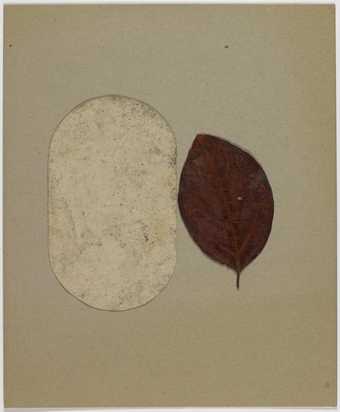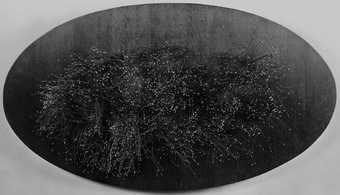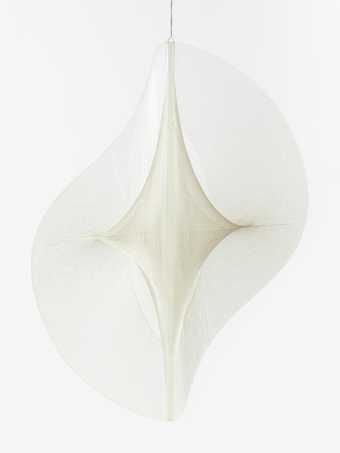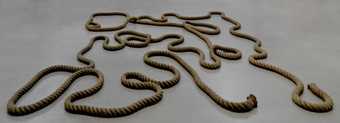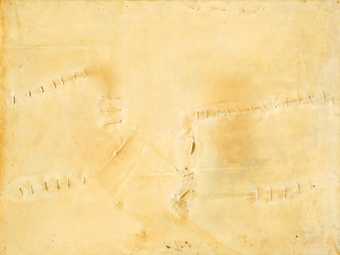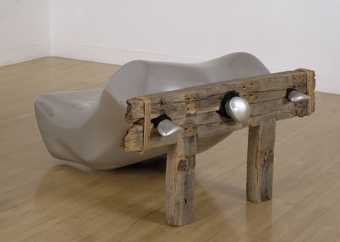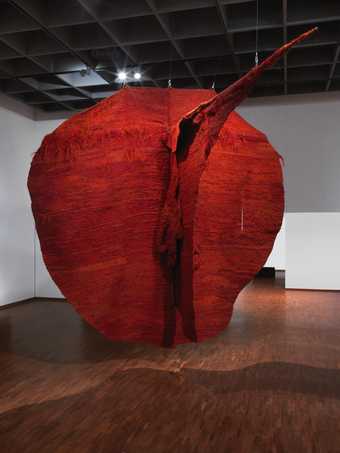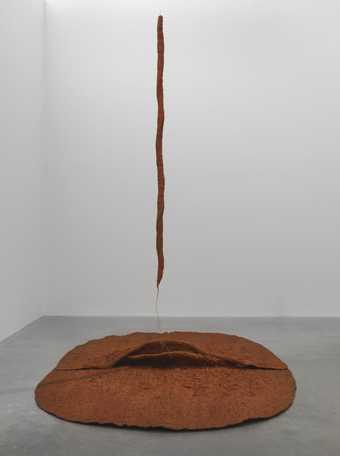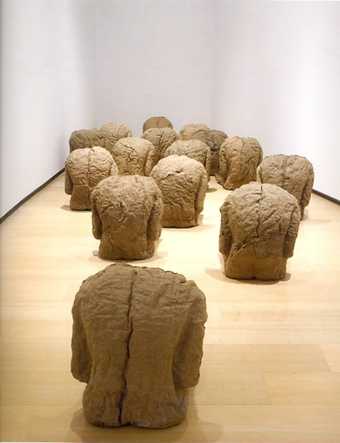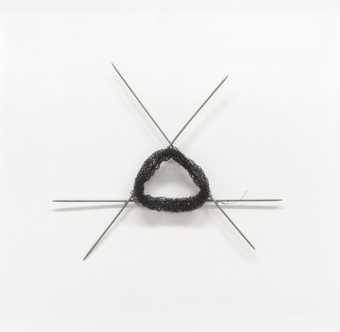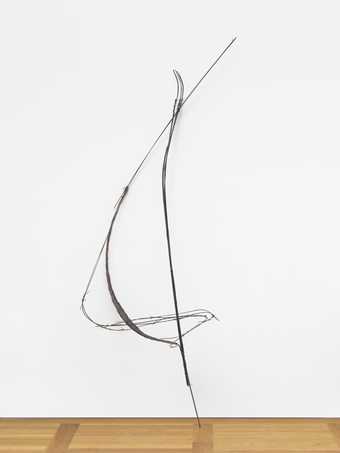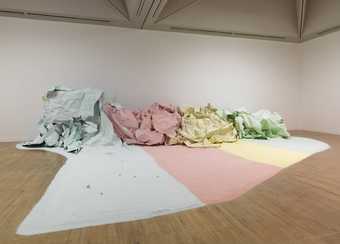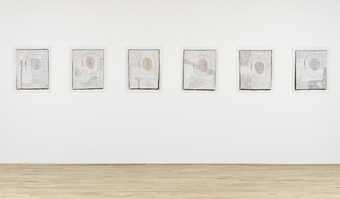On loan
Fondation Toms Pauli at the Musée cantonal des Beaux-Arts de Lausanne/Plateforme 10 (Lausanne, Switzerland): Magdalena Abakanowicz
- Artist
- Magdalena Abakanowicz 1930–2017
- Medium
- Burlap, cotton gauze, hemp rope, nylon and sisal
- Dimensions
- Overall display dimensions variable
- Collection
- Tate
- Acquisition
- Presented anonymously 2009
- Reference
- T12958
Summary
Embryology is a collection of objects of varying sizes, made of various rough-hewn fabrics and stuffed. When installed, the boulder-like forms are accumulated into large group environments that the viewer can walk into and around. The objects inhabit an ambiguous, disturbing place between bodies, organic matter and rock. While they appear firm and weighty, the seams and slashes in the fabric betray their softness. Their shapes are evocative of cocoon-like forms, something also suggested by the series title, Embryology. Magdalena Abakanowicz made these works to reflect on regeneration and the development of human and animal nervous systems, topics she discussed with scientists in Poland during the early 1970s. The materials and scale of this work exemplify Abakanowicz’s preoccupation with surface, texture and seriality.
Abakanowicz began her earliest cycle of these artworks, called the Abakans, during the 1960s. These objects were the product of the conditions in which the artist lived in Soviet-controlled Poland: in one room, with limited access to materials, the soft objects were woven using threads pulled from discarded ropes. Having previously made gouaches on canvas which she kept folded under her bed, Abakanowicz was able to store the large-scale sisal pieces in the same way. The artist’s active use of a technique more commonly associated with a craft tradition is a central concern of these works, which stage the tension between hard and soft as well as monumentality and a poverty of means.
The artist has described the Abakans as ‘Monumental, strong, soft and erotic’ (Magdalena Abakanowicz, ‘Reflections’, in Institut Valencià d’Art Modern 2008, p.97). Historically they have been shown individually or installed in groups to create an environment. Resembling both organic and bodily forms, they vary in colour and shape. Made in 1969, Abakan Red (Tate T12979) is suspended from the ceiling, falling in folds that appear both vaginal and suggestive of a great protective cape. Abakan Orange 1971 (Tate T12980) consists of a long orange rope-like form hanging from the ceiling, gradually diminishing in width to a thin thread connected to a large, roughly circular shape draped on the floor. Here the horizontal and vertical are held in tension in a dramatic interdependent connection.
The seriality of Embryology is also replicated in Backs 2009 (Tate T12981), a group of humanoid figures shown hunched over, their spines towards the viewer. The figures appear pensive but also abject; it is unclear if they are bent in prayer or subjugation. The artist has described the work: ‘people who saw the Backs would ask: “Is it Auschwitz?” “Is it a religious ceremony in Peru?” “Is it a dance of Ramayana?” The answer to these questions is affirmative, because it speaks about the human condition in general’ (Abakanowicz, ‘Reflections’, in Institut Valencià d’Art Modern 2008, p.98).
Further reading
Magdalena Abakanowicz, ‘Confession: Excerpts from My Autobiography’, Sculpture, vol.24, no.8, October 2005, pp.30–7.
Konteksty, special issue on Magdalena Abakanowicz, vol.60, nos.3–4, 2006.
Magdalena Abakanowicz, exhibition catalogue, Institut Valencià d’Art Modern, Valencia 2008.
Lucy Askew and Rachel Taylor
November 2008
Does this text contain inaccurate information or language that you feel we should improve or change? We would like to hear from you.
Explore
- abstraction(8,615)
-
- non-representational(6,161)
-
- irregular forms(2,007)
- formal qualities(12,454)
- education, science and learning(1,416)
-
- embryology(1)
You might like
-
Joseph Beuys Untitled
1955 -
Antoni Starczewski a b/a b
1971 -
Pol Bury 3069 White Dots on an Oval Background
1966 -
Naum Gabo Linear Construction No. 2
1970–1 -
Barry Flanagan rope (gr 2sp 60) 6 ‘67
1967 -
Stephen Buckley Fresh End
1971 -
Siobhán Hapaska Delirious
1996 -
Magdalena Abakanowicz Abakan Red
1969 -
Magdalena Abakanowicz Abakan Orange
1971 -
Magdalena Abakanowicz Backs
1976–80 -
Marisa Merz Untitled
1969 -
Shelagh Cluett Flux III
1979 -
Karla Black At Fault
2011 -
Geta Bratescu Medeic Callisthenic Moves
1980–1 -
Claus Bremer a text happens
1967


